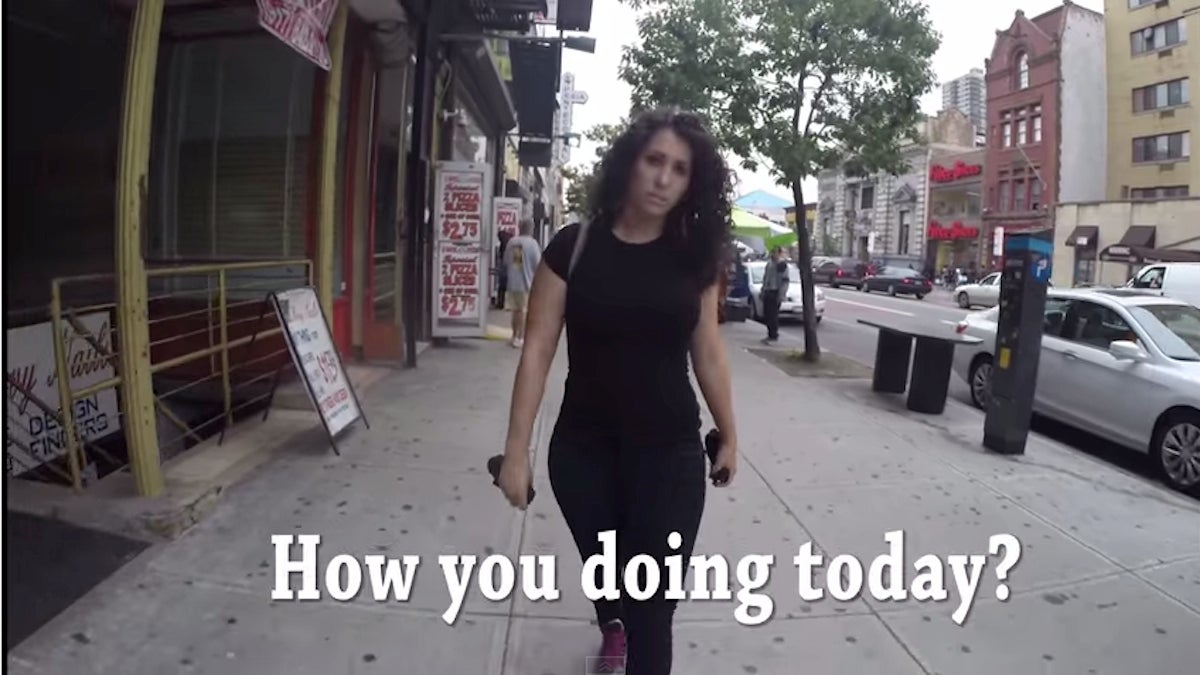From ‘mashing’ to street harassment women still face lewd comments
Listen
Still image from the YouTube video "10 Hours of Walking in NYC as a Woman", produced by Hollaback, a non-profit group dedicating to fighting street harassment.
A hundred years ago, men who made lewd comments to female passersby were known as “mashers.” In 1913, an Omaha judge drew up a “Masher’s Schedule” of fines against them. The penalty for calling a woman “chicken” was $5; “honey-bunch,” $10; “turtle-dove,” $15; and “baby doll,” $20.
I didn’t hear any of these terms in the viral catcalling video posted last month by the anti-harassment group Hollaback!, in which actress Shoshana Roberts is accosted by over 100 men during a 10-hour walk through Manhattan. But I also haven’t heard anyone suggest that her tormentors should have been reported to the police, or penalized by the courts.
And that tells you something important about our current moment. On the one hand, we’re shocked—shocked!—by the harassment that on the video, which has been viewed by over 30 million people. But we don’t have any legal strategy to stop it.
Prior generations of Americans did. Across the country, law enforcement officials used disorderly-conduct and loitering laws to arrest and fine sexual harassers. Or they instituted special “anti-masher” measures, like the Omaha judge’s fine schedule.
In Toledo, a 1905 ordinance “to protect women from the masher nuisance” decreed that “any person who shall unlawfully follow, pursue, or otherwise molest or insult any female” would be fined $50. A Washington, D.C. measure established a $25 penalty for “any man who smiles at a woman passing him on the public streets, or who makes grimaces of a flirting or insulting nature as to incur the displeasure of the woman in question.” And a Houston law levied a $100 fine against men “who shall stare at, or make what is commonly called goo-goo eyes” at “any female person upon the street.”
As prudish as their language might sound today, these measures responded to a very real set of problems. Across American cities, unwanted male advances represented a constant threat to American women.
In 1909, an 18-year-old woman wrote that she was “grossly insulted at least a dozen times a day by that despicable creature, the New York masher.” Unless she was escorted by a man, she added, “there is no place day or night, that I feel safe from men who prowl your streets and fill your restaurants, your elevators, your theaters, and your shops.”
“Bicycle mashers” loitered in Central Park, hissing at female riders and trying to get them to dismount. Outside Wadleigh High School, the first public secondary institution for girls in New York, “school mashers” congregated as the final bell sounded. Canoe and rowboat mashers harassed women at lakes and ponds, while automobile mashers honked at them before speeding away.
But the worst offenders lurked on the “L” or elevated trains and later on the subway, which one observer called “the mashers’ playground.” In 1902, a saleswoman wrote that she was accosted on an L train by “gray side-whiskered man of probably sixty, who looked like a prosperous banker.”
Yet mashing knew no class boundaries. “I tried to move away in the crowd but he linked his arm in mine and detained me,” the woman reported. When she reached her workplace, she found that two other employees had been harassed by the same man. “Can’t you get him arrested?” she wondered.
In isolated instances, the answer was “yes.” The most publicized case involved the famed opera tenor Enrico Caruso, who was arrested at the Central Park Zoo in 1906 after pressing himself up against a woman. As one newspaper warned after Caruso’s arrest, even men “reputed to be worth millions” could be dragged into court for mashing.
WHYY is your source for fact-based, in-depth journalism and information. As a nonprofit organization, we rely on financial support from readers like you. Please give today.

